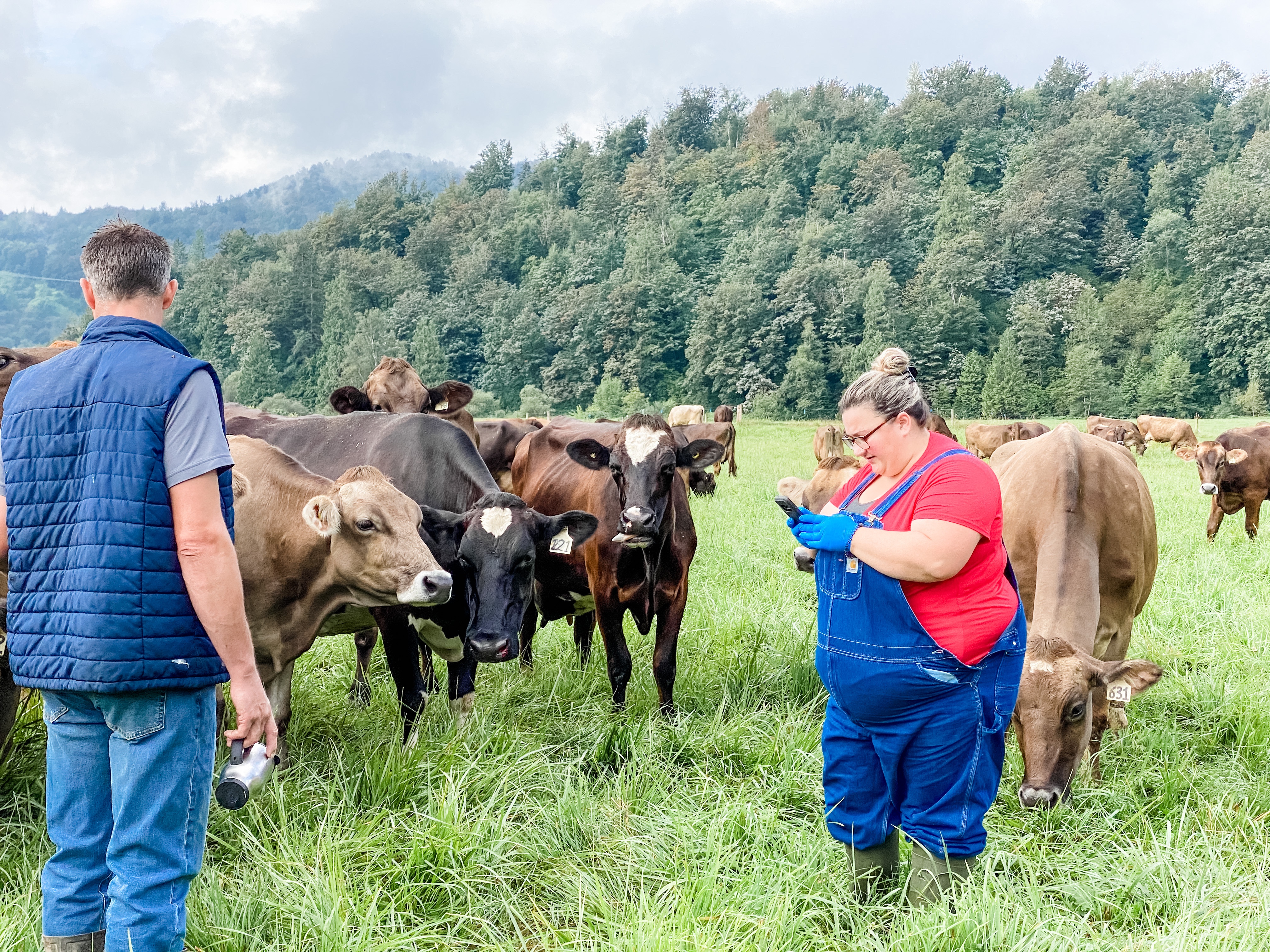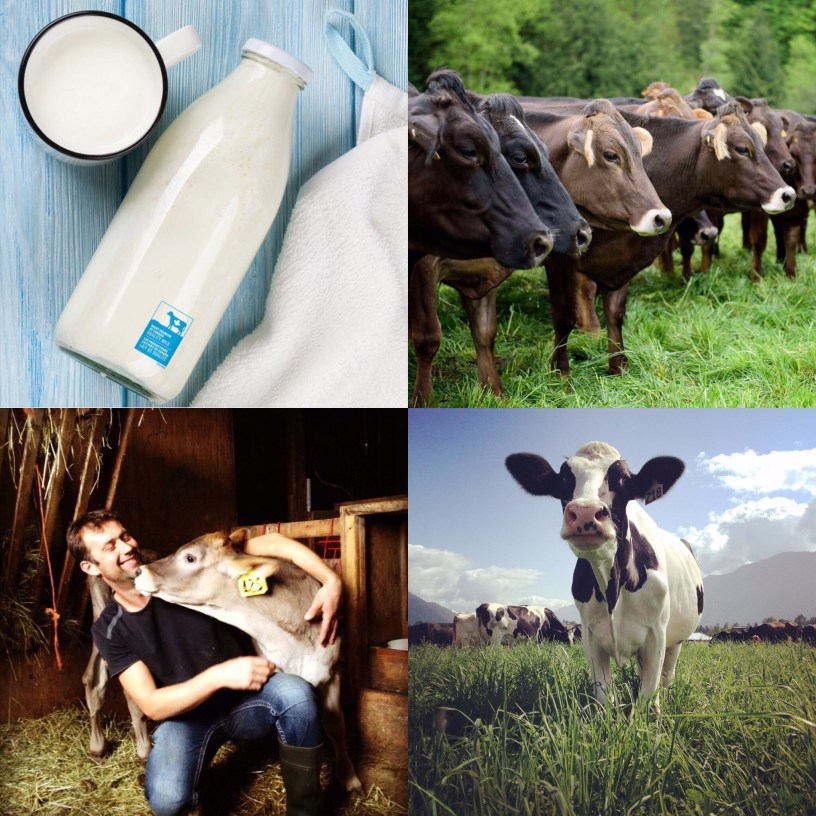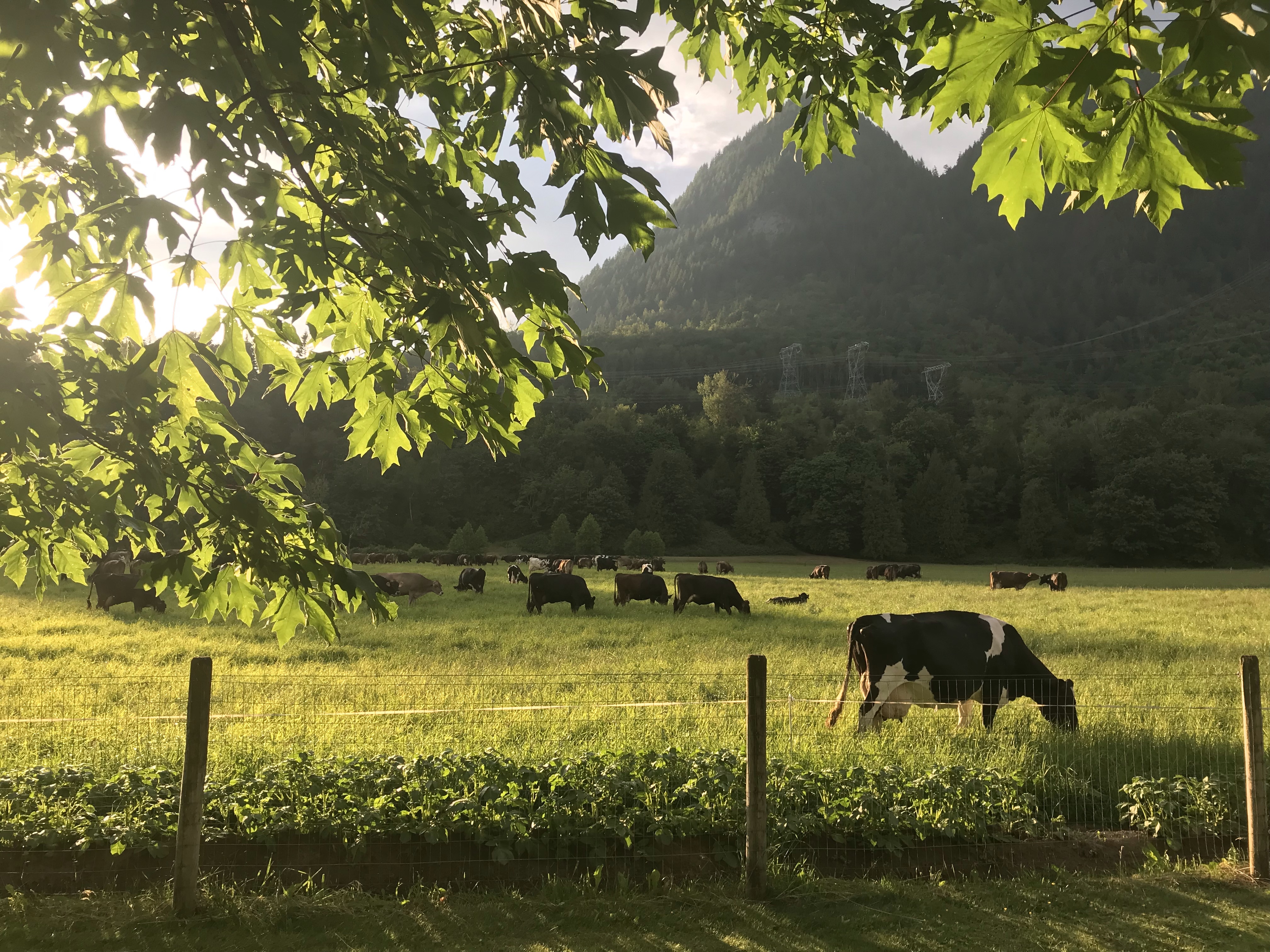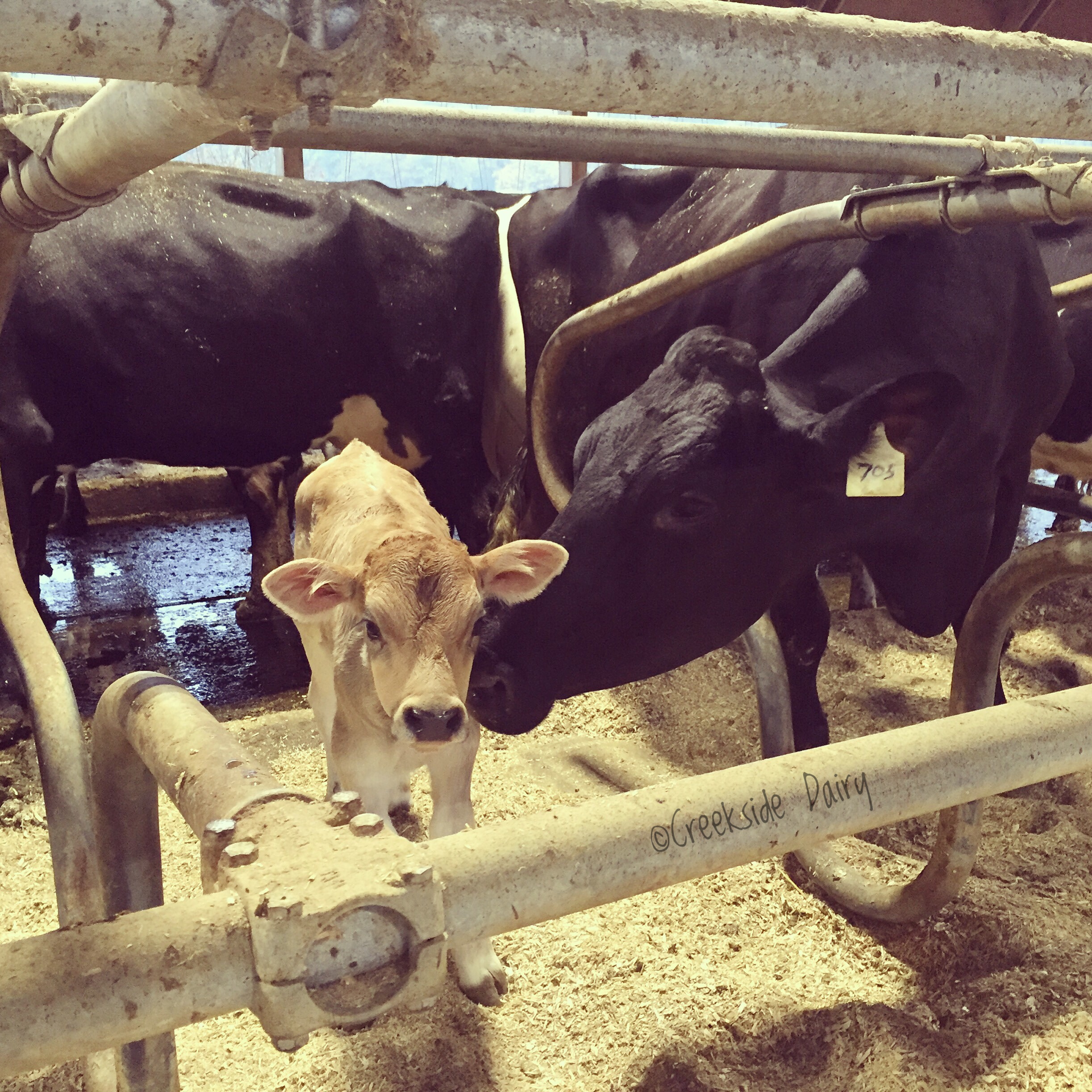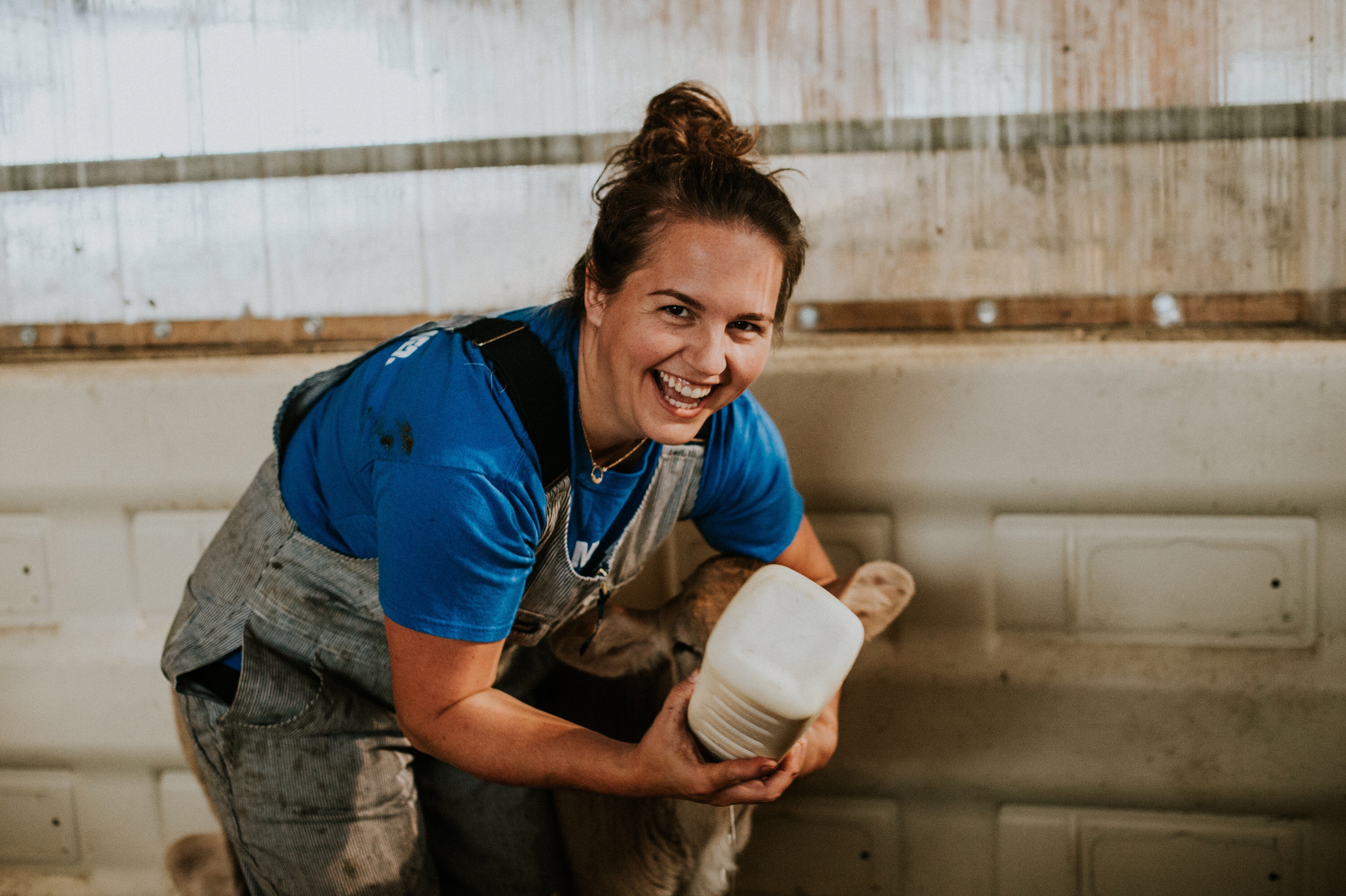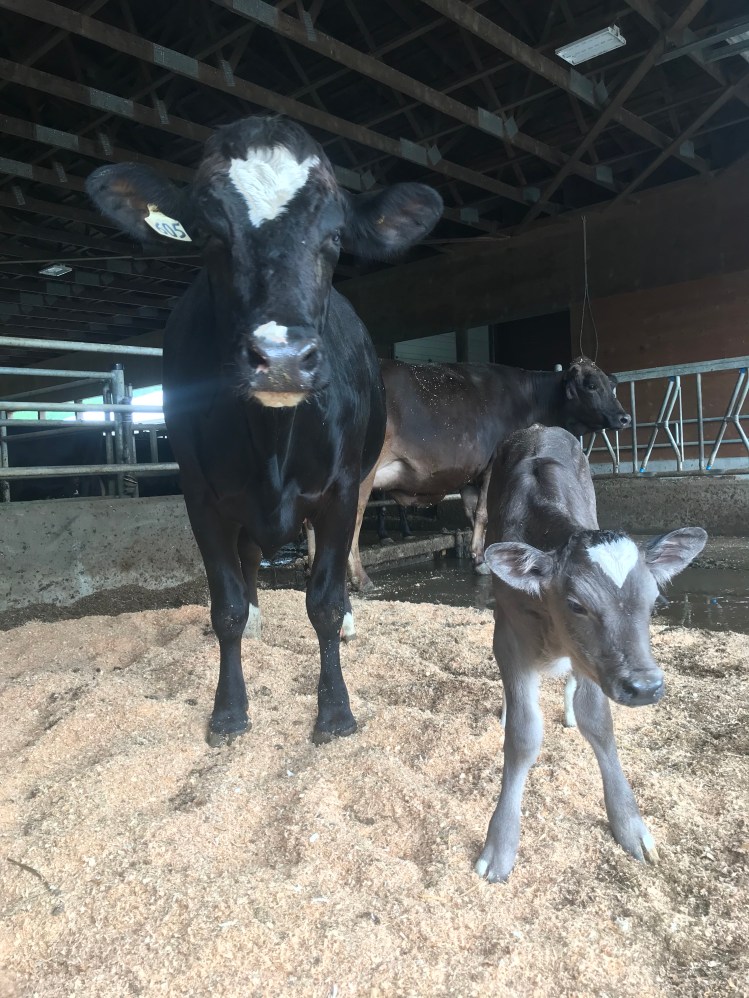If you have ever searched for information about dairy farming online, I’m sure you have noticed this common theme in the claims put forward by animal rights groups: a lack of understanding of animal confinement. It’s not uncommon to hear/read activists’ remarks similar to this: “Animals should not be confined in barns, but should be free to roam where they please.” or “Confining animals in crammed and dirty barns is inhumane.” or “Dirty and unsanitary barns lead to disease epidemics in dairy herds, requiring constant antibiotic treatment.”
Yesterday, the absurdity of these claims struck me once again. It was time for our regular “changing of the girls’ sheets”, aka putting a new, fresh layer of aromatic and soft wood shavings in the cows’ stalls. Because the weather has been quite dry for a few weeks, we’ve been able to allow the girls some outdoor access, and so yesterday was a prime time for them to get out to stretch their legs while we gave them new bedding. After we were done with bedding, we opened the barn gate. The girls ignored us and stayed out in the paddock, enjoying the fresh air. But less than 15 minutes later it began to snow lightly. I watched with interest: for many of our girls, this was their first experience of snow, so how would they react? Our mild West Coast winters mean that snowfalls here are very few and far between. Our cows weren’t quite sure what to make of this white stuff! As the snow began to fall more thickly, the wind began to whip around the corner of the barn, causing me to shiver in my thick barn coat and I wasn’t surprised to see our ladies make their way rather quickly into the barn. I smiled as I watched many of them make their way to the stalls, settle down into the soft and fluffy new bedding and begin chewing their cud contentedly, while others headed off to the feed bunk to munch on their ration of corn silage, grass silage, hay and grains. It was so very obvious to me that our cows love their barn and enjoy spending time there!
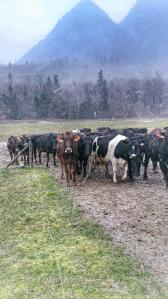
These cows weren’t too happy out in the wind and snow!

Our barn has stalls for 91 cows. Currently, there are 85 cows in this barn.
Animal rights activists fail to understand that allowing cows access to the outdoors is all well and good, but cows also require shelter from the elements, even here in our mild and temperate climate, but more especially in areas that experience harsher extremes. And that’s why farmers take care to ensure that their barns are comfortable, clean and safe places for cows to spend their days. Here in BC and soon all across Canada, adherence to the Code of Practice for the Care and Handling of Dairy Cattle is now mandatory. This Code is extremely comprehensive and deals extensively with all aspects of animals care, from animal housing, feeding, and health care to animal welfare. All farms across Canada will be regularly inspected to ensure compliance with this Code.

Monica soaking up the rays in her comfortable stall.
In regards to animal housing, the Code states that “housing must allow cattle to easily stand up, lie down, adopt normal resting postures, and have visual contact with other cattle. Cattle must have a bed that provides comfort, insulation, warmth, dryness and traction.” In addition, the Code demands that cows not be overcrowded. As organic farmers, we are required to also abide by these regulations. In the case of stocking density, the Organic Standards supersede the Code and require a less dense stocking rate. Barn cleanliness is also dealt with in the Code, which requires that manure is removed regularly and thoroughly. Each farm will be subject to inspections which will score the farm on the cleanliness of their cows. “Cleanliness scoring of dairy cattle is a tool for measuring environmental cleanliness and the relative risks for … diseases.” I have visited many dairy farms, and I know that farmers are committed to providing a comfortable and sanitary home for their cows. This Code will likely not require any changes on these farms, nor on ours, because we already comply with these standards, but it does make it apparent that farmers and our national dairy board take proper animal housing very seriously.
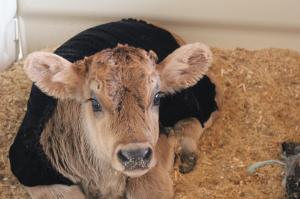
Our calves’ housing environment is important too! Cleanliness and comfort are top priority.
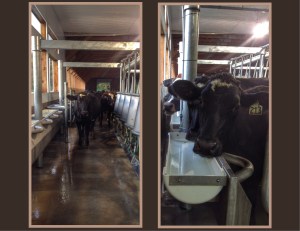
Food is produced in our milking parlour – cleanliness is both necessary and mandatory!
In addition to the Code of Practice, Canadian dairy farms are also required to be certified by the Canadian Quality Milk program, an on-farm food safety program to help producers prevent and reduce food safety hazards and risks on their farms. In order to be in compliance with the CQM program, dairy producers monitor critical areas and implement best management practices, including, among others, sanitizing the milking equipment and making sure their wash water is clean. Farms are inspected to ensure compliance and to guarantee a safe product for consumers.
I recently discussed our commitment to our cows’ welfare with an animal rights activist. In our discussion, she purported that our farm was an anomaly. She couldn’t believe that farms like ours are the norm, not the exception. Our farm is not unusual. It’s just a normal farm, typical of the family farms that dot the landscape across our country. So why do people have a hard time believing this? Unfortunately, it is because it is so difficult for consumers to find real information about real farms. When trying to find information about dairy farming online, one is bombarded with biased information from animal rights groups crying murder, rape, and general animal abuse. It’s no wonder that consumers can become concerned and even disgusted, especially if this type of information meant to further the animal rights groups’ agenda is all that can be found! To help to combat this type of information, I’d like to invite you, my fellow farmers, to share stories and photos of your happy cows in your comfortable and clean barns. By doing so, we can work together to dispel the myths and lies that surround our beautiful way of life and perhaps renew a consumer’s disenchanted outlook on dairy farming and spark a new appreciation for dairy products.

